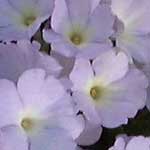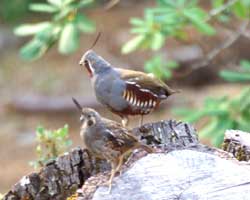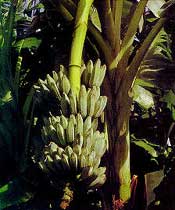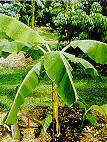Adventure
 'I believe any trip in search of wildlife can be coupled with physical activity and elements of cultural diversity to form a thrilling opportunity ' 'I believe any trip in search of wildlife can be coupled with physical activity and elements of cultural diversity to form a thrilling opportunity '
John H.Eickert
A man in Govind Ghat warned me the valley was haunted! He related how only devout sadhus journeyed into the valley. I was enchanted by the story. Farther along the trail, I met a Sikh
on pilgrimage to Hemkund Lake. We walked together. He explained how Hemkund Lake and the Valley of Flowers is a most holy site for Sikh’s. In the Sikh holy book the Granth Sahib, Guru Gobid Singh wrote of the time he spent meditating on the shores of a lake
surrounded by seven high peaks. I rested the night in the village of Gangaria and early the next day finished my trek up the steep five-kilometer path to the Valley of Flowers.
I first heard the name of the place while watching the shadows change on the Taj Mahal. I was captivated by the name of the valley and new I would have to find my way there. The trek begins
in the village of Govind Ghat, which can be reached along the road from Delhi and through Haridwar then Joshimath. The trek from Govind Ghat to Gangaria is about 15 kilometers.
The Valley of Flowers is not very large, perhaps ten kilometers by two kilometers. The Pushpawati River splits the valley and tumbles over a series of small waterfalls along its course. The best time to visit the area is mid-July to mid-August. As I recall,
I was there in mid-August.
 The Valley of Flowers lived up to its name. It was alive with blossoms. I met another man, a botanist from Mumbai. He rambled off the names of so many flowers I could barely write
them down. He told me the valley contained nearly 300 species of flowering plant including anemones, asters, fritillaries, gentians, geraniums, larkspurs, lilies, orchids, the Himalayan blue poppy, potentillas, primulas ( picture on left) and marigolds. Phew!
As I sat and listened to this learned man, butterflies and hummingbirds whizzed by. The valley was alive with micro wildlife. I guessed Himalayan Thar and blue sheep must also use the valley. The Valley of Flowers lived up to its name. It was alive with blossoms. I met another man, a botanist from Mumbai. He rambled off the names of so many flowers I could barely write
them down. He told me the valley contained nearly 300 species of flowering plant including anemones, asters, fritillaries, gentians, geraniums, larkspurs, lilies, orchids, the Himalayan blue poppy, potentillas, primulas ( picture on left) and marigolds. Phew!
As I sat and listened to this learned man, butterflies and hummingbirds whizzed by. The valley was alive with micro wildlife. I guessed Himalayan Thar and blue sheep must also use the valley.
This small sheltered area would be ideal for lambing. If there were lambing grounds here, there would also be snow leopards present then. It was a wonderful day. Eventually, evening shadows
crept into the valley and it was time to go. I hurried down the steep path and returned to Gangaria. For some reason, I had an uneasy feeling about being there at night.
Today, I am home in Montana. Though only recently returned, I already miss the Himalaya. Winter is upon us here. The wind blows sharp and cold from the north. Crisp, white new snow blankets the land. It will be a very long time until spring. I close my eyes
and dream of the Valley of Flowers. I can smell the blooms and hear the buzzings. My senses tingle. Perhaps the old man in Govind Ghat was right. Perhaps the Valley of Flowers is haunted. Make a plan now to visit next year, take the time and take your time.
Cheers.
Visit
http://www.numbum.net or call NumBum Adventurers at 406-777-2228
|
Answers To Quiz Of The Month
This month no one has given all right answers, mhassim@aus.ac.ae has given 9 right answers
Right Answer to
Parks Sanctuaries of India
|
| 1.The first man made bird sanctuary is |
|
Kaladeo Ghana |
Vedanthangal |
Ranganthitoo
|
|
| 2.The first marine national park is in |
|
Gujarat |
Maharashtra |
Bengal
|
|
| 3.In its number of mammals threatened with extinction India ranks
|
|
4th in the world |
6th in the world |
3rd in the world
|
|
| 4.India`s oldest national park is |
|
| 5.India has ------------number of tiger reserves
|
|
| 6.The Indian Wildlife Protection act was promulgated in the year
|
|
| 7.About 70% of the total raptor species found in the country are, harboured in
|
|
| 8.Official name of Borivli National Park is |
|
Sanjay Gandhi N.P |
Indira Gandhi N.P |
Rajiv Gandhi N.P
|
|
| 9.Bandhavgarh N.P is situated in
|
|
Uttar Pradesh |
Maharashtra |
Madhya Pradesh
|
|
| 10.India`s oldest zoo was established in the year |
|
Please try our quiz for the current month on
Quiz on threatened species
|
Endangered
By Susan Sharma
 This ground-dwelling, seed eater is endemic to western Himalayan foothills. The bird is globally treatened, probably extinct. The Himalayan quail was last observed in June 1868 at Jerepani, India. Although
the critically endangered bird has eluded sighting since 1876, wildlife experts and ornithologists are not willing to write off the bird, especially after several other species thought to have gone extinct have made a reappearance after several decades. (
eg. Jerdon's Courser, Forest Owlet). This ground-dwelling, seed eater is endemic to western Himalayan foothills. The bird is globally treatened, probably extinct. The Himalayan quail was last observed in June 1868 at Jerepani, India. Although
the critically endangered bird has eluded sighting since 1876, wildlife experts and ornithologists are not willing to write off the bird, especially after several other species thought to have gone extinct have made a reappearance after several decades. (
eg. Jerdon's Courser, Forest Owlet).
The earliest authentic record of the mountain quail's, zoologically called Ophrysia superciliosa, existence dates back to 1836, when a British sportsman, tucker, collected a pair from the vicinity of Mussoorie.
The last mountain quail, a female, was shot on the ridge known as Sherka-Dhanda, overlooking the Nanital lake, in 1876. There is no reliable evidence to suggest that the bird has been sighted since.
Described as a shy bird, the Himalayan quail is believed to be a resident of grassland or scrubland and oak forests at an altitude of 1,650 to 2,500 metres. Drastic changes in vegetation and land use pattern and other forms of disturbances have been responsible
for the decline in the population of this species.
According to famous British ornithologist A O Hume, the bird's irregular appearance in areas around Mussoorie and Nainital is due to the fact that it is possibly a migrant from the well wooded south-eastern portion of Chinese Tibet during severe winters. However
later ornithologists felt the bird is a poor flier and hence could not have migrated.
Apart from scientific expeditions, amateurs are also looking for the elusive bird. Mr. Yasser Arafat a regular contributer to 'Wildbytes', is on the trail of finding the Himalayan quail. Wildlywise.com are arranging 12 days expeditions in quail territory. We
all hope that this cute pheasant will be rediscovered soon.
Schedule I, Part III of the Indian Wildlife (Protection) Act, 1972 lists rare and endangered birds which are totally protected throughout the country, live or dead or part thereof. They include Andaman Teal,
Sarus crane, Assam Bamboo Partridge, Bazas, Bengal Florican, Blacknecked Crane, Blood Pheasants, , Eastern White Stork, Forest spotted owlet, Jerdon's Courser, Cheer Pheasant, Great Pied Hornbill, Hawks, Great Indian Bustard, Hooded Crane, Hornbills, Houbara
Bustard, Humes Bartailed Pheasant, Indian Pied Hornbill, Lammergeier, Large Falcons, Large Whistling Teal, Monal pheasant, Narcondam Hornbill, Nicobar Megapode, Nicobar Pigeon, Osprey, Peacock-Pheasant, Peafowl or Indian Peafowl, Pinkheaded Duck, Scalter's
Monal Pheasant, Siberian White Crane, Tibetan Snowcock, Tragopan-Pheasant, Whitebellied Sea Eagle, White-eared Pheasant, White Spoonbill, and Whitewinged Wood Duck.
|
Forest and trees
By Priti Sawant
English name: Plantain; Hindi name:
Kela; Scientific name: Musa paradisiaca

To Indians this tree is synonymous with plenitude. It is frequently planted in backyard so that its fruit, combs of bananas, can be offered to the gods in gratitude for the fertility with which they have blessed the earth.
In many parts of India the plantain is regarded as a reincarnation of the goddess of plenty herself, and whole living trees are made an integral part of the marriage ceremony. Their tapering trunks generous leaves ceremoniously flank the entrance
to the marriage arena. The posts and the canopy of the wedding pavilion are made from its branches and leaves.
A popular story of Mahabharata is that: Before the outbreak of war between the Kauravas and Pandavas, Krishna went as a mediator. The Pandavas did not want war but their cousins; the Kauravas were adamant o it and would not listen to Krishna’s
advice even after he had predicted the destruction of the entire race. Defeated in his mission, Krishna visited Vidura, a half brother to both Pandu and Dhritrashtra. Vidura was not at home. Viduri, his wife offered Krishna the Banana fruit. She was so enraptured
by Krishna having come to her house that absent-mindedly; she threw away the fruit and offered only the peels of the fruit to Krishna. Krishna noticed it but kept on eating the peels as they were offered to him with a pure heart and with unflinching devotion.
Gadaba tribe of Orissa believes that Plantain plant bears fruit without pollination and fertilization of its flowers because of the following reason. Long ago, there were five sisters called Mango, Tamarind, Fig, Jamun and Plantain. When the
sisters grew in their teens, their father was worried about finding them suitable husbands. To ascertain their wishes, he called them one day. Except for the plantain, other four sisters wanted husbands and many children. When plantain was asked what she desired,
she replied that she wanted children but not a husband. And also that she wanted to get old soon without having to wait for long time.
 In course of time, Mango, Tamarind, Fig and Jamun got married and bore so many children that their husband ran away in sheer fright. These girls in the next life were born as trees and bore many fruits that symbolically are the children
they had in their previous life. Plantain did not marry but produced children and grew old. Plantain plant bears fruit parthenogenetcally, that is without fertilization and the fruits do not have seeds. In course of time, Mango, Tamarind, Fig and Jamun got married and bore so many children that their husband ran away in sheer fright. These girls in the next life were born as trees and bore many fruits that symbolically are the children
they had in their previous life. Plantain did not marry but produced children and grew old. Plantain plant bears fruit parthenogenetcally, that is without fertilization and the fruits do not have seeds.
The plantain is also famed for its medical uses. Taken orally, fresh plantain sap is a purgative. When applied locally, it is a styptic. Its leaves are easily disinfected; hence they are used as poultices
for open wounds. The dense textured flowers are eaten as delicacy, but when raw they are powdered into a medicine for gynecological ailments. The green fruit is valued for its astringent and cooling properties. The ripe banana, universally known to be rich
in minerals and vitamins, is often pulped and given to convalescing patients because it is easily digestible, soothing the mucous membranes and providing a nutrient for hemoglobin.
|
News and Views
News……………..
Have you ever seen young Tibetan monks trying to learn their lessons? Outside the classroom, in sprawling verandas or lawns they form into small groups and debate and argue all that they heard in the previous class. The arguments 'for and
against ' get so heated up that to an outsider it will seem like a fight in swing. Needless to say the lessons are fully internalized and become part of their world view. The Internet's biggest gift to education is its interactiveness. While attempting an
online quiz we may absorb more about the topic than by just reading about it. Also the various alternate options given to confuse the person attempting the quiz provokes thought. Our quiz this month is on threatened species.Click
here to attempt it online. Informal chats are another way to provoke thought. We may ask/say anything about the topic without being judged about our ignorance/or knowledge.
The moderator himself/herself is no expert and the idea is to share views and experiences. Please go through our
chat transcripts every month. IWC.com do have wildlife experts as members and even if they do not find time to participate in the chat, we welcome their ideas / contributions which can be mailed to
iwc@indianwildlifeclub.com copy to
susan_sharma@hotmail.com. Our chat topic for October 03 was " deer and antelope".
November to April is the best time to visit national parks and wildlife sanctuaries. John Eickert of
NumBum Adventures tempts the readers with his trekking account to Valley of Flowers.
The tiger contest is still on. The tigers at Ranthambhore are known to be most casual towards tourists. Yet, in this
audio visual they sure seem to tell a story.
and Views…………..
" The recent changes in the Wildlife (Protection) Act, 1972 were supported in an extremely positive and non-partisan way by Members of Parliament of all political parties. These changes have been widely
acknowledged by experts, officials and even human rights groups to be a vast improvement on the older legislation. For the first time we have, for instance, added a category called Community Conserved Reserves, which will encourage a large number of local
communities to lend their purpose and genius to the task of protecting our wildlife.
But all is not smooth sailing. By some estimates perhaps over Rs. 50,000 crores annually may be extracted, legally or illegally, from forests land alone! We know that less than Rs. 500 crores is ploughed back each year for real protection of this natural diversity.
Alarmingly, insurrectionist and separatist groups have taken advantage of ineffective and inadequate government mechanisms, to generate funds from forests and from the trade in wildlife contraband to finance their anti-national agenda. "
-Mr. B.G. Deshmukh, President, Bombay Natural History Society (BNHS)
|
Tips On Beauty Without Cruelty
|
 Deepika Vohra served as the head of the Department of Beauty Culture at the International Polytechnic for Women at New Delhi. She also ran a beauty clinic at Delhi's Vasant Kunj for some time from where she relocated to New
York for five years. Exposure to the world capital of beauty and cosmetics gave her an opportunity to compare the Indian beauty industry with the razzle dazzle of the New World. Reading and researching beauty culture has always been a hobby with her. The tips
for beauty given below were selected from her repertoire of nature based recipes which are time tested to deliver. Deepika Vohra served as the head of the Department of Beauty Culture at the International Polytechnic for Women at New Delhi. She also ran a beauty clinic at Delhi's Vasant Kunj for some time from where she relocated to New
York for five years. Exposure to the world capital of beauty and cosmetics gave her an opportunity to compare the Indian beauty industry with the razzle dazzle of the New World. Reading and researching beauty culture has always been a hobby with her. The tips
for beauty given below were selected from her repertoire of nature based recipes which are time tested to deliver.
|
|
How do you recognize your skin type?
NORMAL SKIN is finely textured with no visible pores, spots, or blemishes, soft and velvety to the touch, and unwrinkled. Normal skin has to be treasured and preserved, as it is liable to change,
if neglected.
OILY SKIN is caused by overactive sebaceous glands that give rise to large open pores. Larger pores, in turn, lead to blackheads, blemishes and acne. The appearance of blackheads and blemishes
is due to clogged oil and dirt in the pores which is not removed instantly by cleansing. Oily skin begins to have an oily shine within a few minutes after wash or make-up. This makes it difficult to hold make-up. However, oily skin has an advantage of ageing
very slowly, but deep cleansing must be thorough.
DRY SKIN is a sensitive skin type which comes in blotches, tends to peel off easily and feels tight after a wash. Lack of moisture results in dry skin and this skin type is more prominent around
the eyes, mouth, lips, sides of mouth, and forehead. Cleansing, toning, moisturizing form an integral routine of this type of skin. Dry skin is highly susceptible to diet, extremes in weather and harsh perfumed skin care products. Dry skin also has another
disadvantage. Wrinkles appear faster giving you a prematurely aged look. A generous application of moisturizer will produce a skin which would be on par with the 'enviable' peaches and cream complexion.
COMBINATION SKIN as the word 'combination' suggests it is mix of two different skin types on one face. More often this skin type is the result of a badly cleansed and neglected skin. It is easily
recognizable as it is oily down the T panel, that is the forehead, nose, chin. The skin gets this oily look down the T panel while the rest of the face appear and feel dry. Combination skin needs scrupulous cleansing. It is a good idea to use a face mask for
oily skin down the T panel and a mask for dry skin for the rest of the face. This method of treating the combination skin works ideally to give a perfect, balanced effect.
SENSITIVE SKIN this type of skin is extremely delicate and vulnerable. It is easily susceptible to freckles, itchy spots and blotches. Dermatitis and allergies caused by chemical cosmetics are
common problems of a sensitive skin. It is best to discontinue the usage of strong and harsh skin care products as well as perfumed creams and moisturizers
|
|
|
COMPLEXION SCRUB
A complexion scrub works wonders and leaves your skin with a healthy , shining glow. Complexion scrub is an effective means of removing the dead cells from the surface of the skin. The slightly, abrasive
tiny grains present in a scrub , stimulates and gently sloughs away dead and flaky skin . A fresh, smooth look is left behind.
A complexion scrub must be used once a week to loosen ingrained impurities from the pores. For dry skin types a scrub once a month, will suffice. Scrubs are an excellent product for oily skin.
HOME MADE SCRUBS
ORANGE PEEL SCRUB
4tablespoon orange peel powder
2tablespoon oatmeal powder
2tablespoon wheat germ powder
METHOD -----
Mix all the three ingredients and store in an airtight container. Use as and when required. For an oily skin, add a few drops of lemon juice or cucumber juice to the water in which you dip the muslin bag containing the scrub. Gently rub the wet muslin bag on
to the face and neck for at least fifteen minutes. Use circular movements and wash off with tepid water.
GREEN GRAM SCRUB
4 Tablespoon green gram powder
2 tablespoon besan
2 teaspoon sandalwood powder
METHOD-----
Combine all ingredients together and store in an airtight container.
WHEAT GERM SCRUB
1tablespoon oatmeal powder
1tablespoon wheat germ powder
1tablespoon skim milk powder
1teaspoon sandal wood powder
METHOD
Mix the ingredients together and fill in a small muslin bag. Dip the muslin bag in lukewarm water and gently rub on face and neck in circular motion for at least 15 minutes. Finally wash off with tepid water.
|
|
|
Zoo
 |
Toby Ninan retired from Delhi Zoo about two years back. With his varied experiences with the wild animals in the zoo, he is the right person
to direct your queries to. Hear what Ninan has to say about his life and chosen career! |
Early morning calls are no novelty when one is the curator of a zoo like the Delhi Zoo. In fact calls to come and attend an emergency at any odd time of the day and night actually add some spice to the mundane duties of the zookeeper.
Well, this call was from the chowkidar on duty around the lion house beat and he seemed to be unduly perturbed. I thought to myself- may be there is a lion let lose, or may be a snake has got into the lion den. But the alarm was of a different
kind-a young man's body was floating in the moat of the lion enclosure. I reached the lion enclosure and found the chowkidar's story to b true. Ram Lall was not out of his mind- nor was he in the throes of an early morning nightmare!
There was not much one could do except inform the Director, the police and the keeper of lions-in that order. Soon after morning attendance, all the keepers and their assistants went first to the lion house to see the 'floating body'. They
would have liked to hang around sharing some juicy gossip but I shooed them away and waited for the police to arrive. Ram Prashad, the lion housekeeper and his assistants meanwhile swept the enclosure cells clean and instead of the stink of lion excreta and
urine, there was a welcome smell of the disinfectant and also the aroma of "dhoop" ( incense) specially burnt for the "lion mata" ( godess).
 The police did arrive and they took out the body of a young man in his late twentys who seemed to be well dressed. I told the Sub Inspector Police that after they have completed all the formalities, they were welcome to come and have a
chat with me in the office by about 12.30 PM when I would be going home for lunch. The police did arrive and they took out the body of a young man in his late twentys who seemed to be well dressed. I told the Sub Inspector Police that after they have completed all the formalities, they were welcome to come and have a
chat with me in the office by about 12.30 PM when I would be going home for lunch.
I did not expect much to come out of this 'murder' but I was wrong. In fact our zoo was instrumental in providing a vital clue which sent the police on their investigating trail.
Just on impulse I checked the entry register of the service gate chowkidar ( the service gate is used by staff and other regular service providers to the zoo). I found that an entry was made at about 11.30 PM ( the night before) and was told
that a fiat car had entered the zoo and was going to the house of some "Nathu Singh or Khem Singh' who did not exist! Visitors normally use the main gate to enter the compound of the zoo. Well, the surprise was that, the service gate chowkidar had heeded some
earlier warnings and entered the car number in his register.
The police took up this clue and the culprit was caught. He turned out to be the father-in-law of the murdered man. The man had done away ( by poisoning) with his son-in-law and thrown him into the lion's moat thinking that the lions would
eat the body and thus destroy evidence.
What he did not know was that lions would be shut in their dens at night and none of them would have cared to make a meal of the dead 'in-law' or should I say 'out-law' to oblige 'pop-in-law'!!
|